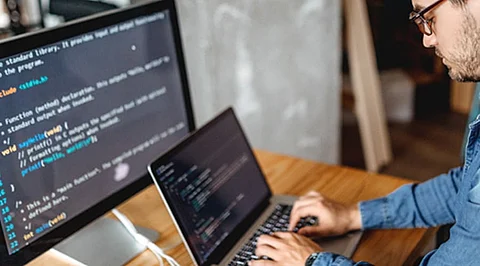


The COVID-19 pandemic has changed the world in so many ways, one of them forcing companies to find different ways of operation with their employees working remotely. However, companies have found a way of improving resilience on operations, increasing employee productivity, and reducing the pandemic's impact on their businesses by adopting virtual desktop environments.
VDI (Virtual Desktop Infrastructure) makes it possible for employees to remotely access virtual desktops using any device of their choice. This has made working from home easy for companies.
That notwithstanding, having employees work from home opens more opportunities for hackers to try and access a company's systems. Even though virtual desktop environments are more secure than standalone desktops, companies need to be very careful with security and make sure that they have implemented efficient security measures to protect themselves. They can do so by;
Different companies deal with different kinds of sensitive information such as medical and financial data. It is therefore important for them to make sure that they have encrypted the data to prevent unauthorized access.
In addition, when transferring the data, they need to ensure that their services have employed an end to end encryption that helps in preventing interception by third parties.
A virtual desktop infrastructure can run multiple operating systems such as Windows, macOS, and Linux at the same time. To ensure that the infrastructure is secure, companies need to implement a security strategy that works with all the platforms installed on the VDI. When choosing a security strategy, they should also ensure that they are choosing one that aligns with their business model.
It is important to note that virtual desktop environments present many points of exploitation by attackers. Some companies think that they have adequate security after securing file servers, disks, and desktops. However, this is not the case.
Companies need to also secure the different endpoint devices used by their partners and employees to access the virtual desktop environment. With this, they will have eliminated any potential loopholes that might be exploited by attackers.
Virtual desktop environments come with many security benefits, something that makes some companies feel that they do not need the services of anti-virus software. It is true that with a virtual desktop infrastructure, companies can control how a virus spreads but cannot prevent the infection itself.
Companies should, therefore, install anti-virus software that has been developed to work with virtual desktop environments to ensure that they are secure. There have been increased reports of ransomware groups attacking virtual machines and companies need to be careful.
Not all the users accessing the virtual desktop environment in a company understand the different security strategies that they should observe. Sometimes, they can create loopholes used by attackers to gain access to the VDI without even knowing, or even install applications that might be insecure.
However, you can control the privileges that every user has, the access they have, and the settings they can change. Using thin clients ensures that devices connected to the VDI cannot make changes to any settings permanently and cannot install any insecure applications.
Migrating to virtual desktop environments might mean that some if not all of the employees in a company are working with such an infrastructure for the first time in their lives. Instead of having them learn on their own about what to do or how to start working, it is good practice to ensure that they get adequate cyber range training.
During the training, ensure that a whole section on security is set aside, and enough time is taken to train them on different security measures that they need to observe when accessing the VDI.
Some companies might lack enough resources to employ experienced security staff. In addition, there are many regulations that companies need to understand and align their virtual desktop environments with. To make sure that they have implemented the right security measures and that they are following the required regulations, they need to consult security experts who can help them when there is any problem.
Finally, it is important to always make sure that your firewalls are up to date in accordance with your company requirements. Even though virtual desktop environments have made things easier for companies and allowed them to reduce operational costs, they pose a security challenge that if not addressed, can lead to serious consequences.
